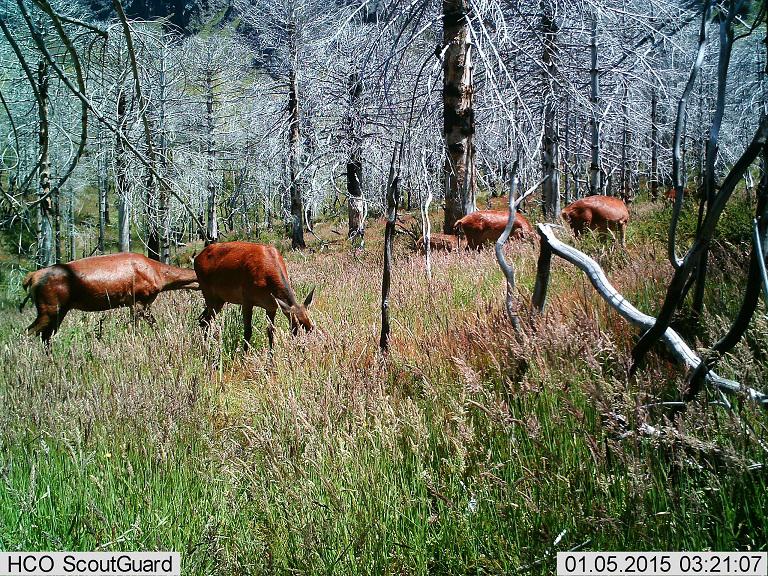Javier Sanguinetti
Determine tree survivorship and cone capacity production of araucaria araucana after different intensities of fire and the regenerative response in presence of non-native granivores in the context of climate change.

Red deer using burnt site.
Araucaria araucana(or Pehuen in Mapucheindigenous name)is animpressively largeand long-lived (> 1200 years), large-seeded emergent conifer from southern Argentina and Chile. It has a restricted distribution and covers only 4 % (approximately 4500 km2) of the total forest area in both countries within the Valdivian Eco-region, one of the Global 200 designed by WWF. Araucaria haslow fertility, poor passive dispersal, and a clear seed regeneration limitation. A diverse assemblage of birds, mammals and insects depends on its seeds for survival and reproduction. In the last century the forest has been progressively invaded by non-native mammals (livestock, wild boar, red deer, hares and rabbits) that feed on araucaria seeds. Fire disturbance is an important factor in shaping the forest mosaic of Araucaria-Nothofagus forest, but may make the forest more vulnerable to exotic species invasion. Araucariaforests have international conservation importance due to their ecological, cultural, aesthetic,social and economic value. However, they are subject to strong direct and indirect pressure by human activities, invasion by non-native mammals that feed on the seeds, and the increased frequency of large and intense fires as consequence of climate change.
The purpose of this proposal is to use a comparative approach to obtain information about the capacity of seeding trees with different severity of burning to survive and continue producing seeds, and to subsequently regenerate in the presence of an assemblage of introduced exotic granivorous mammals.This work will be the first to evaluate the forest response after fires in the presence of non-native mammals by measuring the araucaria seeding tree survivorship and seed production recovery in relation to fire severity, and by estimating the abundance of seedling regeneration in the presence of exotic granivores in different places along an environmental gradient where fires occurred in the last fifteen years.
The scientific information obtained by this project will be transferred in simple language to key agents involved in use, management and protection of Araucaria forests to help predict the future consequences of the modification of fire regimes due to climate change, allow identify the area’s most vulnerable to fire and to invasion by exotic mammals, and establish management actions to restore burnt and degraded forests.